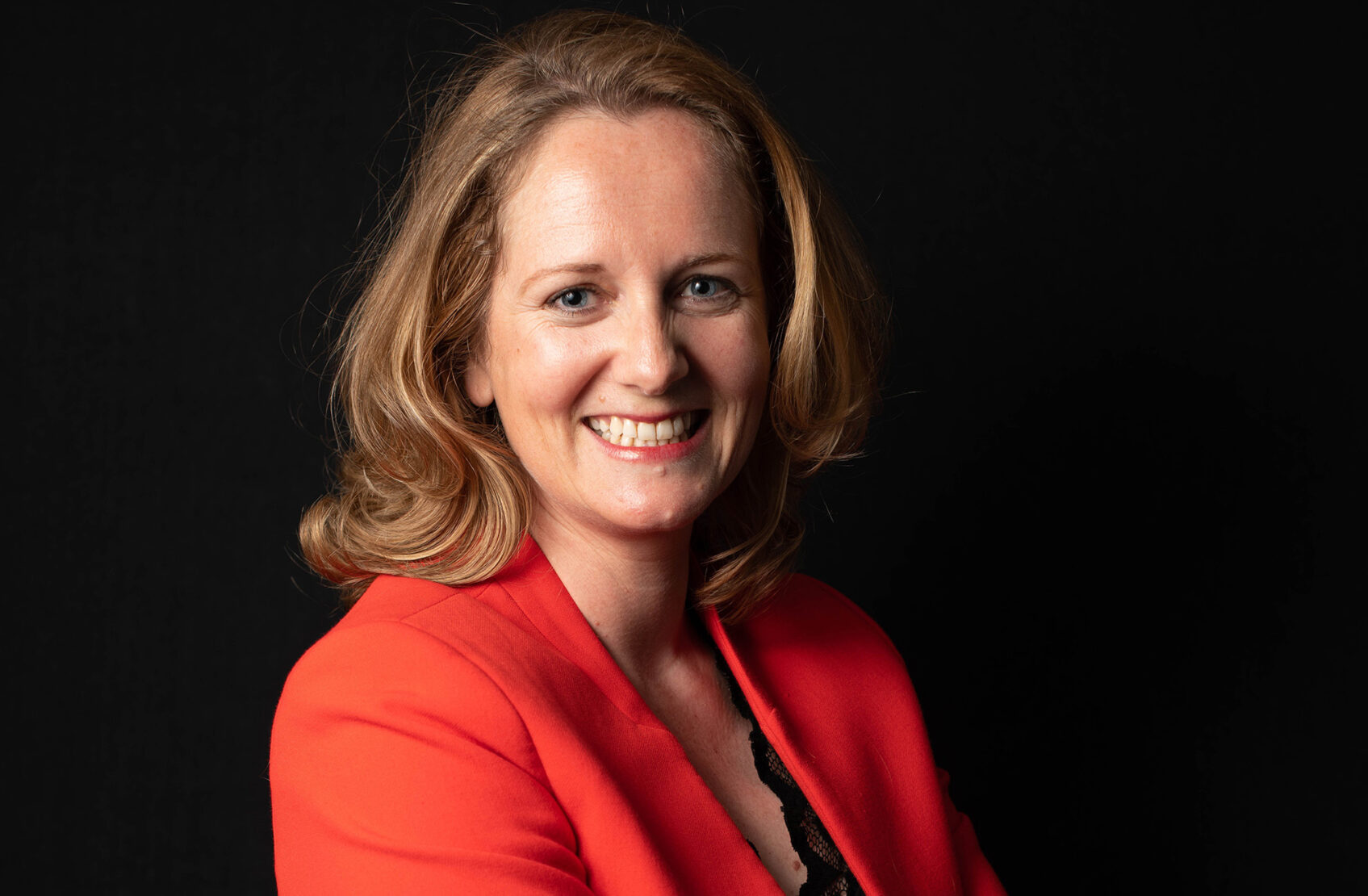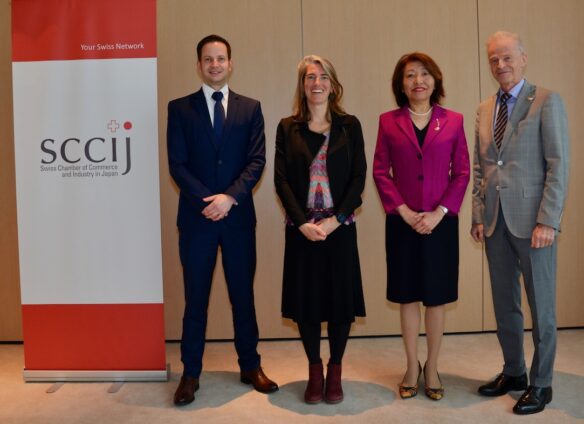Tokyo (SCCIJ) – Due to the changing media landscape, the luxury goods industry has been developing new approaches to reach consumers and customers, in particular real and virtual influencers as well as key opinion leaders. Around 40 members and guests of the SCCIJ joined an evening webinar presented by Ms. Claire Jollain, Assistant Dean of the Hotel Institute Montreux, about the marketing trends in an industry with strong Swiss connections. Full recording available here!

Webinar speaker Ms. Claire Jollain, Hotel Institute Montreux.
Journey into new territory
The speaker promised a “short and virtual trip to luxury land with times of amazement and doubt, and things you do not like”. First, she talked about the classic promotion tool of the luxury industry – celebrity branding or endorsement. A lot of perfume, watch, and jewelry brands communicate their messages this way. “Celebrities become brand ambassadors because of their global fame stemming from movies, sports, or entertainment,” she explained.
With their celebrity status, a brand reaches an international audience without the need to take cultural differences into account: “You want your brand to be associated with the legend, and new customers are buying a part of a dream.” But this promotion can be very expensive. Celebrities like Charlize Theron and Robert Pattinson charge millions of dollars per year. As a result, brands are turning increasingly to influencers or key opinion leaders (KOLs).
Authentic experiences
“Key opinion leaders are known for having expertise in one field outside of the internet whereas influencers have demonstrated their ‘expertise’ on the internet,” she explained. Some of them appear in the shape of an influencer as well as a KOL. A well-known example of an influencer would be the fashion blogger Chiara Ferragni, Ms. Jollain said. The Italian recommends clothes, cosmetics, and accessories on her vlog “The Blonde Salad”.
The author Stephen King could be considered a KOL because he creates bestsellers just by mentioning a book of another author positively. Another KOL unknown in the West or Japan is “Mr. Bag” who became the most authoritative person in China on luxury handbags via his vlog. “He promises a brand to know the luxury consumers’ taste and even sells limited-edition handbags of his partners on his channel,” the speaker reported.
Authenticity versus control
The industry is working with such promoters because consumers perceive influencers and KOLs as more reachable and authentic. “This authenticity is more and more searched by the brands, whereas traditional advertising has become less relevant because of the declining consumption of TV, movies, and magazines,” she said. Besides, such people cost much less; they even take care of the content production and distribution.
But this type of communication strategy carries some risks: “This is a grey market,” she warned. First, if you give such promoters too much freedom, you lose the creative control over your brand. Second, compared to the traditional advertising industry, prices are fluctuating, and audience numbers are difficult to verify.
Some “influencers” buy likes, subscribers, and/or comments generated by bots. On Instagram, half of the accounts may be counterfeit. There are some tools to unmask such practices, though. “Platforms like Instagram measure the engagement rate of likes and followers of an account and calculate a ‘health score’ by removing bots to assure promoters,” she said.
Virtual reality and storytelling
One answer is to work with micro- or nano-influencers with a smaller community of real people. If any of them becomes famous, the brand grows with them. The other answer to this problem are virtual influencers. They came into being as some IT companies wanted to demonstrate their capabilities.
“Such figures do not have to be paid, they are very popular, and you can control their look, words, and actions 100 percent,” Ms. Jollain explained. Some virtual figures are more cartoon-like, others like the famous Lil Miquela, Bermuda, and Imma look and act like humans. Shudu, a “supermodel” type, could easily be mistaken for a real human influencer.
Some luxury goods producers are utilizing these virtual figures to retell the story of their brand and reinforce the brand message. “The creators give the virtual influencer a story and humanlike life which can be shared by followers and consumers,” Ms. Jollain reported. The art of storytelling has become more and more prominent in the communication strategies of luxury brands.
Any story would contain needed elements like a hero embodying the brand (like Coco Chanel), some disruption, an antagonist (like Karl Lagerfeld for Yves Saint-Laurent), but also some mentoring about the brand values, morals, and rituals. “A luxury brand needs to consider its roots and challenge it,” she argued at the end of her webinar lecture. As a successful example, she mentioned the watch and jewelry maker Audemars Piguet.
About the speaker
Ms. Claire Jollain is the Assistant Dean and a lecturer at the Hotel Institute Montreux, the largest private hospitality educator in Switzerland with four schools on six campuses. More than two-thirds of the 6,400 students from 111 countries are studying for a bachelor’s degree in hospitality management. Ms. Jollain’s insights on her work in the digital space can be read in her LinkedIn post “What I have learnt from Gen Z”.
Text: Martin Fritz for SCCIJ
Find below the complete recording of the webinar:





























